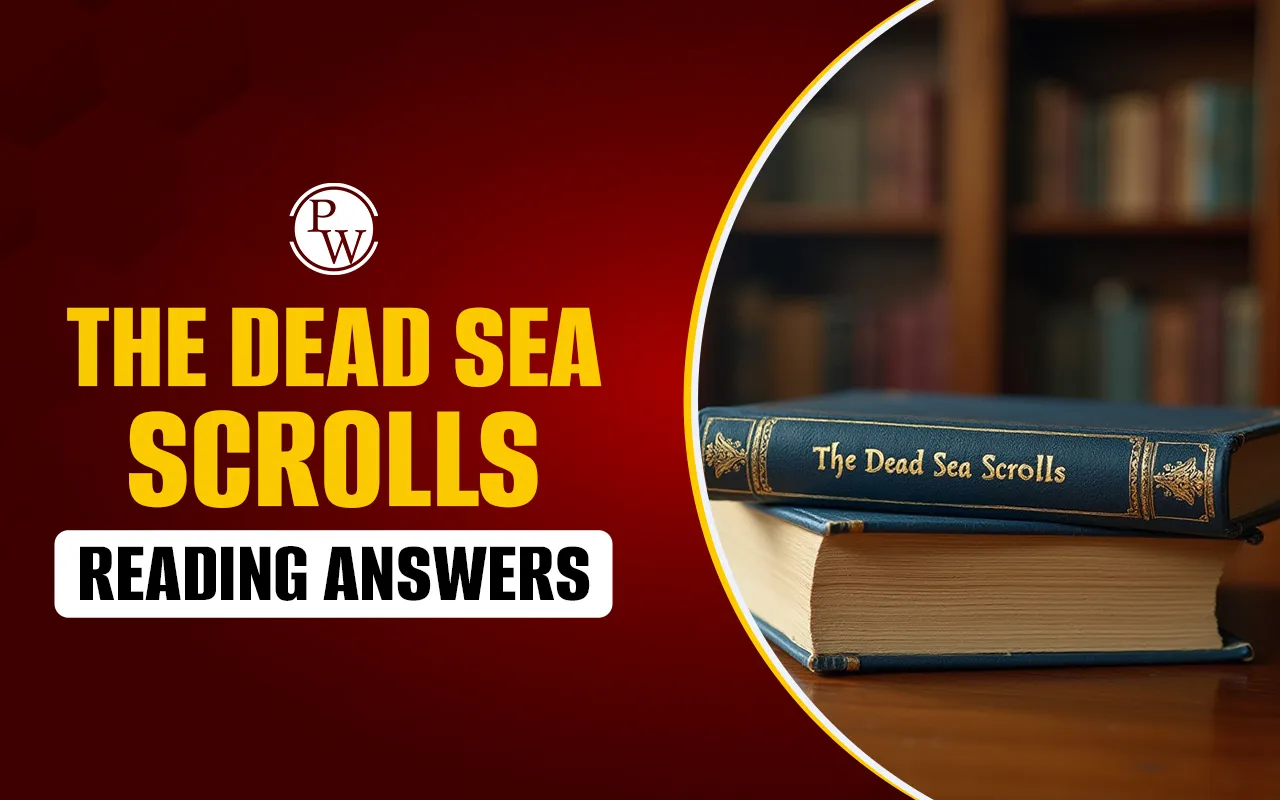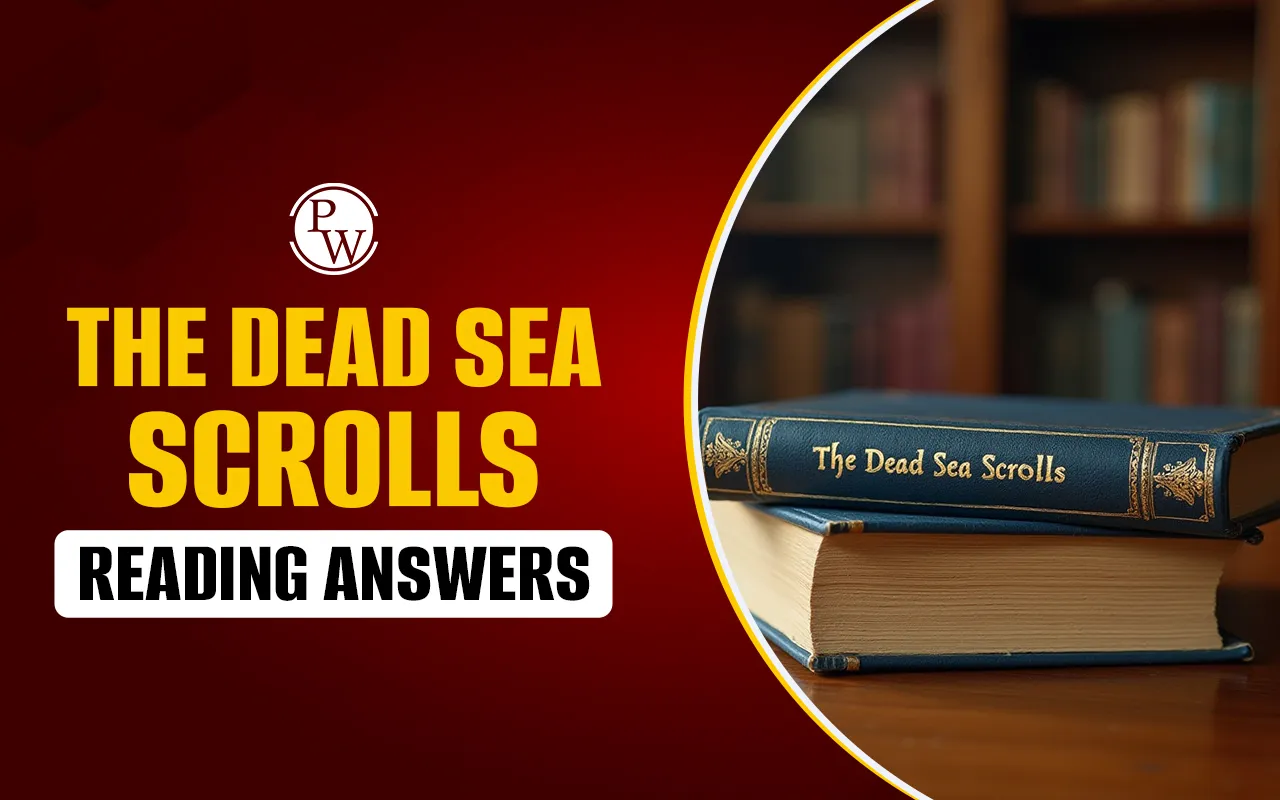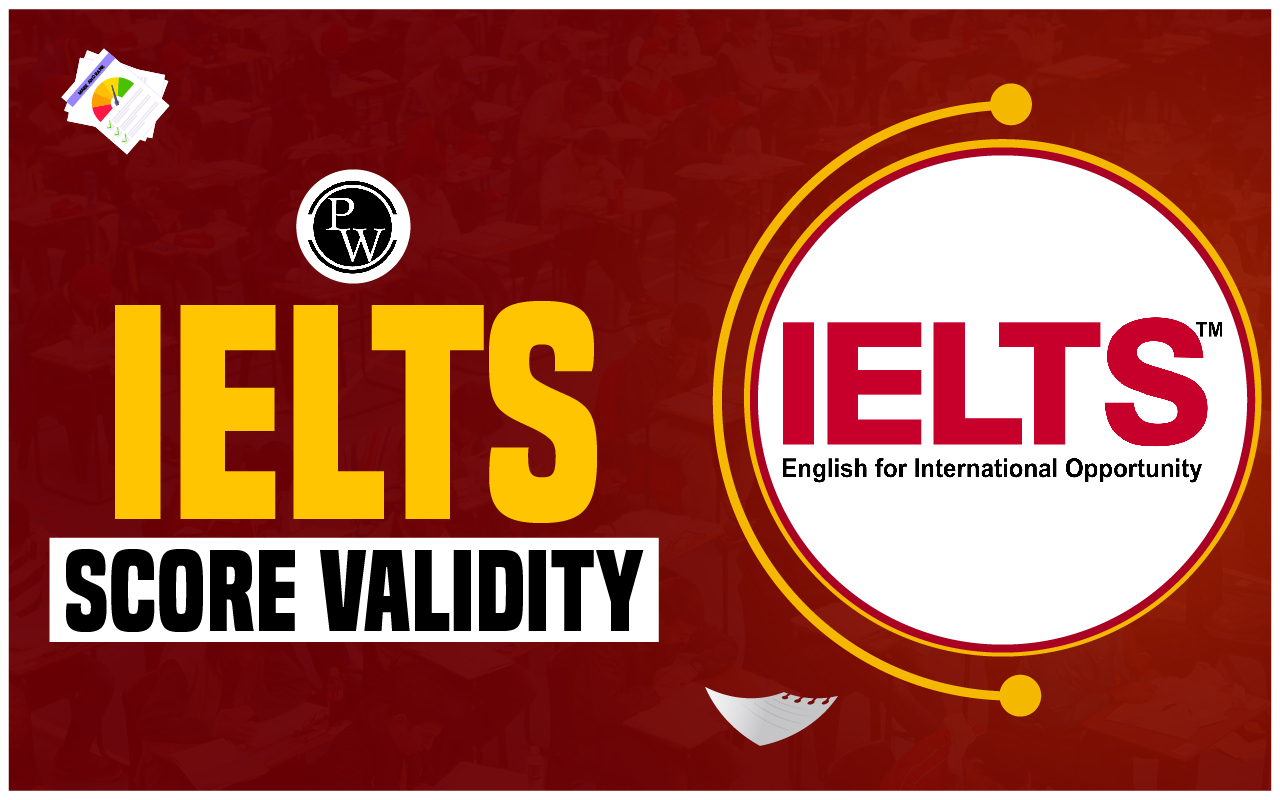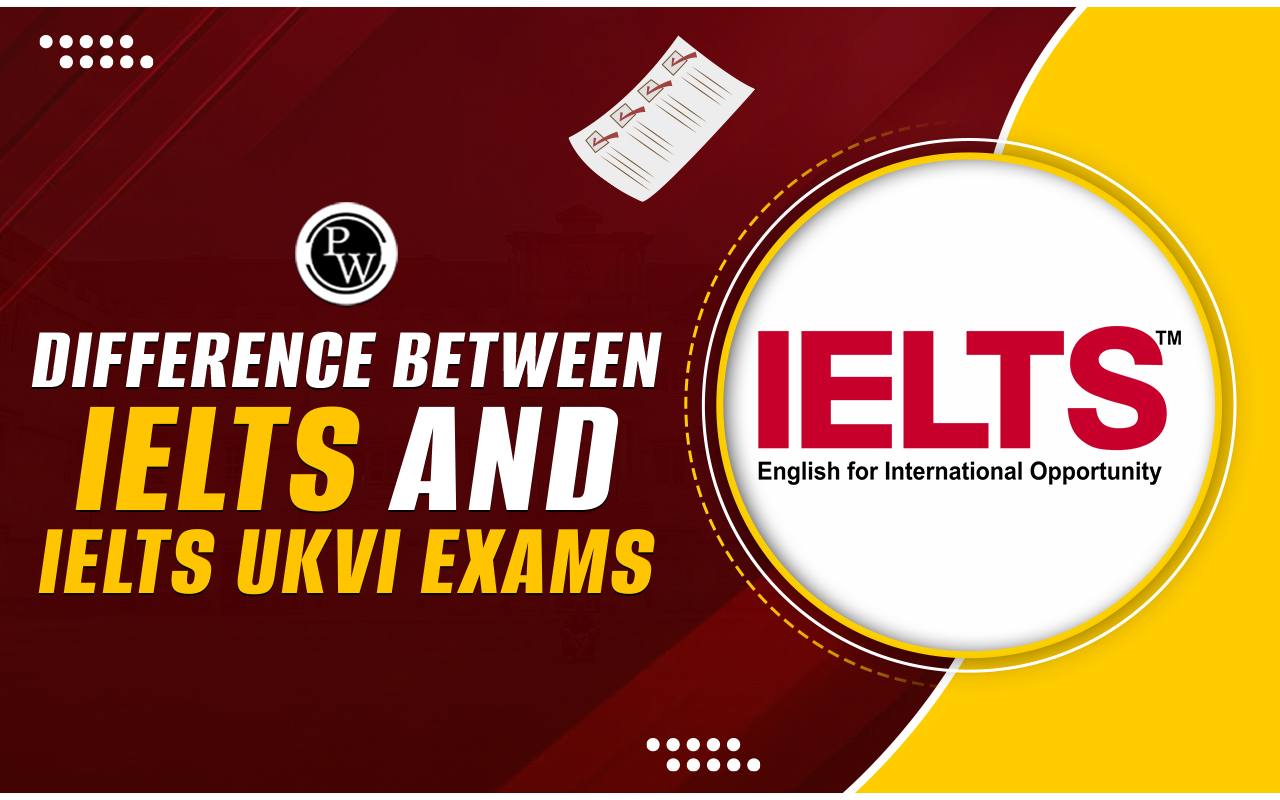

The Dead Sea Scrolls Reading Answers is an IELTS passage that offers both historical intrigue and a challenging reading experience to the students. The passage explores the archaeological discovery, dating back over two millennia, which changed the academic understanding of ancient Judea. It also provides a space for the IELTS aspirants to practice their skills on skimming, scanning, and inference.
In the IELTS Reading Test Format, passages like these require you to manage time effectively while processing dense factual and descriptive information. Therefore, candidates or aspirants who desire to sharpen their reading and analytical skills must practice this passage.
Because in he context of IELTS Reading Topics, this passage is an excellent practice piece for mastering Dead Sea Scrolls true false not given answers, multiple-choice, and matching information questions. So, keep referring to the provided information to know about the complete details related to the questions, answers, and more.
IELTS Passage on The Dead Sea Scrolls Reading Answers
Here is the complete, detailed The Dead Sea Scrolls Reading Answers with passage. In order to help candidates in boosting their effective preparation strategy provided here the passage is. Students can refer to and read the passage to brush up or practice their problem-solving skills especially related to The Dead Sea Scrolls Reading Answers.
The Dead Sea Scrolls Reading Passage
1. In late 1946 or early 1947, three Bedouin teenagers were tending their goats and sheep near the ancient settlement of Qumran, located on the northwest shore of the Dead Sea in what is now known as the West Bank. One of these young shepherds tossed a rock into an opening on the side of a cliff and was surprised to hear a shattering sound. He and his companions later entered the cave and stumbled across a collection of large clay jars, seven of which contained scrolls with writing on them. The teenagers took the seven scrolls to a nearby town where they were sold for a small sum to a local antiquities dealer. Word of the find spread, and Bedouins and archaeologists eventually unearthed tens of thousands of additional scroll fragments from 10 nearby caves; together they make up between 800 and 900 manuscripts. It soon became clear that this was one of the greatest archaeological discoveries ever made.
2. The origin of the Dead Sea Scrolls, which were written around 2,000 years ago between 150 BCE and 70 CE, is still the subject of scholarly debate even today. According to the prevailing theory, they are the work of a population that inhabited the area until Roman troops destroyed the settlement around 70 CE. The area was known as Judea at that time, and the people are thought to have belonged to a group called the Essenes, a devout Jewish sect.
3. The majority of the texts on the Dead Sea Scrolls are in Hebrew, with some fragments written in an ancient version of its alphabet thought to have fallen out of use in the fifth century BCE. But' there are other languages as well. Some scrolls are in Aramaic, the language spoken by many inhabitants of the region from the sixth century BCE to the siege of Jerusalem in 70 CE. In addition, several texts feature translations of the Hebrew Bible into Greek.
4. The Dead Sea Scrolls include fragments from every book of the Old Testament of the Bible except for the Book of Esther. The only entire book of the Hebrew Bible preserved among the manuscripts from Qumran is Isaiah; this copy, dated to the first century BCE, is considered the earliest biblical manuscript still in existence. Along with biblical texts, the scrolls include documents about sectarian regulations and religious writings that do not appear in the Old Testament.
5. The writing on the Dead Sea Scrolls is mostly in black or occasionally red ink, and the scrolls themselves are nearly all made of either parchment (animal skin) or an early form of paper called 'papyrus'. The only exception is the scroll numbered 3Q15, which was created out of a combination of copper and tin. Known as the Copper Scroll, this curious document features letters chiseled onto metal - perhaps, as some have theorized, to better withstand the passage of time. One of the most intriguing manuscripts from Qumran, this is a sort of ancient treasure map that lists dozens of gold and silver caches. Using an unconventional vocabulary and odd spelling, it describes 64 underground hiding places that supposedly contain riches buried for safekeeping. None of these hoards have been recovered, possibly because the Romans pillaged Judea during the first century CE. According to various hypotheses, the treasure belonged to local people, or was rescued from the Second Temple before its destruction or never existed to begin with.
6. Some of the Dead Sea Scrolls have been on interesting journeys. In 1948, a Syrian Orthodox archbishop known as Mar Samuel acquired four of the original seven scrolls from a Jerusalem shoemaker and part-time antiquity dealer, paying less than $100 for them. He then travelled to the United States and unsuccessfully offered them to a number of universities, including Yale. Finally, in 19M, he placed an advertisement in the business newspaper The Wall Street Journal' - under the category 'Miscellaneous Items for Sale' - that read: 'Biblical Manuscripts: dating back to at least 200 B.C. are for sale. This would be an ideal gift to an educational or religious institution by an individual or group. Fortunately, Israeli archaeologist and statesman Yigael Yadin negotiated their purchase and brought the scrolls back to Jerusalem, where they remain to this day.
7. In 2017, researchers from the University of Haifa restored and deciphered one of the last untranslated scrolls. The university's Eshbal Ratson and Jonathan Ben-Dov spent one year reassembling the 60 fragments that make up the scroll. Deciphered from a band of coded text on parchment, the find provides insight into the community of people who wrote it and the 364-day calendar they would have used. The scroll names celebrations that indicate shifts in seasons and details two yearly religious events known from another Dead Sea Scroll. Only one more known scroll remains untranslated.
| IELTS Exam Important Links | |
|---|---|
| IELTS Reading Band Score | IELTS Listening Band Score |
| IELTS Speaking Band Score | IELTS Writing Band Score |
The Dead Sea Scrolls Reading Passage Sample Questions
Below are practice questions reflecting the complexity of the passage. These follow the typical IELTS Reading Question Types candidates might encounter. All these questions are framed specially to align with the above The Dead Sea Scrolls Reading Answers with the passage. Check the below provided questions below to know about some of the practice questions to solve and know reading skills.
1–5 The Dead Sea Scrolls True / False / Not Given Questions
Do the following statements agree with the information given in the reading passage?
Write:
TRUE if the statement agrees with the information
FALSE if the statement contradicts the information
NOT GIVEN if there is no information on this
-
The Bedouin teenagers were deliberately searching for ancient manuscripts.
-
The Dead Sea Scrolls were discovered in a single cave near Qumran.
-
Scholars unanimously agree that the Essenes wrote the Dead Sea Scrolls.
-
Some of the Dead Sea Scrolls are written in Greek.
-
The Book of Esther is missing from the manuscripts found at Qumran.
6–9 The Dead Sea Scrolls Multiple Choice Questions
Choose the correct letter A, B, C, or D.
The Copper Scroll is unique because:
A. It contains the entire Book of Isaiah.
B. It is made from metal and lists hidden treasures.
C. It was the first scroll discovered.
D. It was written in Greek.
Why might none of the treasures described in the Copper Scroll have been found?
A. They were fictional.
B. They were stolen by the Romans.
C. They were hidden in an unknown country.
D. They were destroyed in a fire.
How much did Mar Samuel pay for four of the original scrolls?
A. Less than $100
B. $500
C. $1,000
D. Nothing – they were a gift
The scroll restored in 2017 provided details about:
A. Locations of buried treasure
B. Rules of the Essene community
C. A 364-day calendar and seasonal events
D. Translation of the Old Testament into Greek
10–13 The Dead Sea Scrolls Sentence Completion Questions
Complete the sentences below using NO MORE THAN TWO WORDS from the passage.
-
The teenagers first sold the scrolls to a ___________________.
-
The Book of Isaiah found at Qumran is the earliest known ___________________.
-
The Copper Scroll describes ___________________ hiding places of treasures.
-
The Wall Street Journal advertisement listed the scrolls under the category ___________________.
14–16 The Dead Sea Scrolls Matching Information Questions
Match each researcher or historical figure with the correct description.
List of People:
i. Michael Cole
ii. Yigael Yadin
iii. Eshbal Ratson and Jonathan Ben-Dov
Descriptions:
A. Deciphered one of the last untranslated scrolls.
B. Negotiated the purchase of scrolls for Israel.
C. Created a version of the task easier for African males to handle.
IELTS Dead Sea Scrolls Reading Comprehension Answers
IELTS Dead Sea Scrolls Reading Comprehension Answers explore one of the most significant archaeological discoveries of the 20th century. This passage reveals the history, significance, and preservation challenges of the scrolls. Refer to the table below to know about the IELTS Dead Sea Scrolls Reading Comprehension answers:
| IELTS Dead Sea Scrolls Reading Comprehension Answers | ||
| Q. No | Question Type | Answer |
| 1 | True / False / Not Given | FALSE |
| 2 | FALSE | |
| 3 | NOT GIVEN | |
| 4 | TRUE | |
| 5 | TRUE | |
| 6 | Multiple Choice | B |
| 7 | B | |
| 8 | A | |
| 9 | C | |
| 10 | Sentence Completion | local antiquities dealer |
| 11 | biblical manuscript | |
| 12 | 64 | |
| 13 | Miscellaneous Items for Sale | |
| 14 | Matching Information | C |
| 15 | B | |
| 16 | A | |
Dead Sea Scrolls Vocabulary List IELTS
A robust vocabulary is essential for performing well in passages like The Dead Sea Scrolls Reading Answers. Below is a targeted Dead Sea Scrolls vocabulary list IELTS to help you decode complex terms:
| Dead Sea Scrolls Vocabulary List IELTS | ||
| Word / Phrase | Definition | Example Sentence |
| Manuscript | A handwritten document | The Dead Sea Scrolls are ancient Hebrew manuscripts. |
| Sectarian | Relating to a specific religious group | The scrolls contain sectarian regulations. |
| Parchment | Writing material made from animal skin | Many scrolls were preserved on parchment. |
| Papyrus | An early form of paper from plant material | Some scrolls were written on papyrus. |
| Chiseled | Carved into a hard surface | Letters were chiseled into the Copper Scroll. |
| Caches | Hidden storage locations | The Copper Scroll lists caches of gold and silver. |
| Hypothesis | A proposed explanation | One hypothesis suggests the treasure was hidden before the Second Temple’s destruction. |
| Decipher | To figure out the meaning of coded text | Researchers took a year to decipher the scroll fragments. |
| Fragment | A small broken piece | Archaeologists recovered scroll fragments from several caves. |
Also Read:
- Should You Use All Capital Letters in the IELTS Listening and Reading Tests
- IELTS Reading Mistakes
- How to Improve IELTS Reading Score
- How to Manage Time in IELTS Reading
Guidance of PW IELTS
Physics Wallah offers multiple online IELTS courses for all students. Follow the IELTS pages to better prepare for the exam.
| What is IELTS Exam? | Documents Required for IELTS Registration |
| IELTS exam eligibility requirements | IELTS Exam Fees |
| IELTS test results | IELTS Exam Pattern |
The Dead Sea Scrolls Reading Answers FAQs
What is the IELTS reading passage on The Dead Sea Scrolls about?
Why is The Dead Sea Scrolls passage important for IELTS aspirants?
Where can I find the Dead Sea Scrolls IELTS reading answers?
How to solve IELTS reading passage on Dead Sea Scrolls efficiently?












